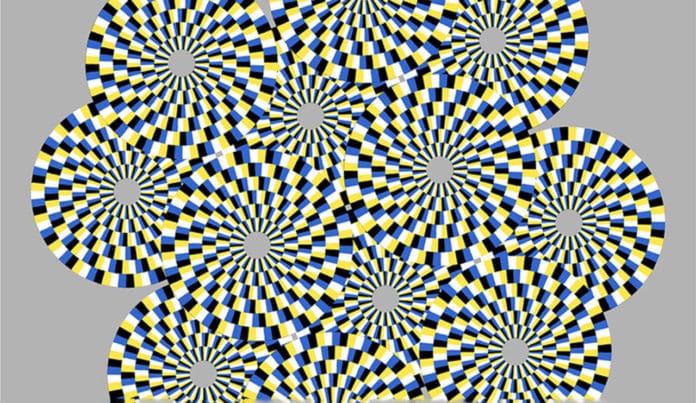Why people perceive motion in some static images puzzled scientists who tried to explain the phenomenon. A new study seems to found the answer in the eyes of flies.
The study by Yale scientists suggests that flies also perceive motion in static images as humans. The percept was abolished when the elementary motion detector neurons T4 and T5 were silenced.
Scientists presented flies with optical illusions similar to the one above. They then measured the flies’ behavior to check whether the insects perceive the motion in this optical illusion the same way humans do. Flies instinctively turn their bodies toward any perceived motion; when presented with the optical illusion, the flies turn in the same direction as the motion that humans perceive in the pattern.
Simultaneously, the analysts analyzed specific neuron types that administer motion detection in flies and found a pattern of static pattern responses. By turning those same neurons on and off, the scientists had the option to change flies’ perception of illusory motion. By turning off two sorts of motion-detecting neurons, they eliminated the illusion. By turning off just one of the two types, they created flies that perceived illusory motion the other way than they did with the two neurons active.
Based on this data, the scientists theorized that the optical illusion results from small imbalances in how the different motion detectors contribute to how flies respond or don’t respond to illusions.
Damon Clark, associate professor of molecular, cellular, and developmental biology and physics and neuroscience at Yale, said, “The last common ancestor of flies and humans lived a half billion years ago, but the two species have evolved similar strategies perceiving motion. Understanding these shared strategies can help us more fully understand the human visual system.”
Journal Reference:
- John G. Hildebrand et al. Mechanism for analogous illusory motion perception in flies and humans. Proceedings of the National Academy of Sciences, 2020; DOI: 10.1073/pnas.2002937117
